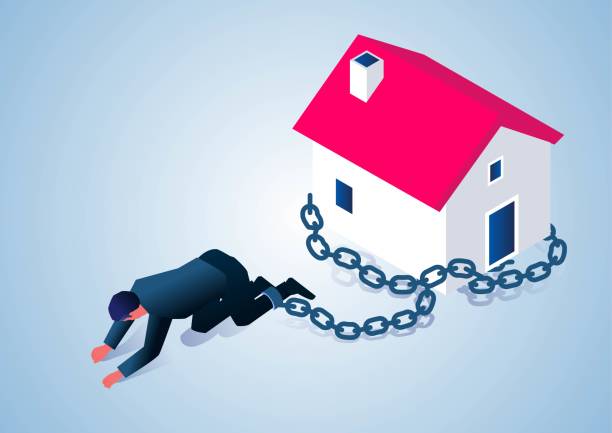In recent times, an increasing number of borrowers have found themselves in a challenging situation commonly referred to as the ‘mortgage prison.’ These are homeowners who initially secured their home loans at lower interest rates but are now facing difficulties in meeting the stringent regulatory requirements necessary to refinance their loans at current market rates. The primary cause of this predicament is the tightening of the serviceability buffer, a safety net designed to protect borrowers against potential interest rate increases and unforeseen fluctuations in their income or expenses.

Understanding the Serviceability Buffer
The serviceability buffer is a critical component in the world of lending. It acts as a safeguard to ensure that borrowers can comfortably make repayments, even if interest rates rise or their financial circumstances change. In Australia, the Australian Prudential Regulation Authority (APRA) recommends a buffer of 3%. This means that lenders must assess whether a borrower can meet repayments comfortably, even if the interest rate on their loan were 3 percentage points higher at the time of loan approval.
Calculating the Serviceability Level
Lenders calculate the serviceability level by deducting all monthly expenses from the after-tax monthly income. This calculation results in a figure known as the net income surplus. To determine the net service ratio, lenders divide the net income surplus by the cost of the borrower’s monthly debt commitments.
Evolution of the Serviceability Buffer
In July 2019, APRA proposed changes to its guidance on serviceability assessments performed by authorized deposit-taking institutions (ADIs), such as banks and lending institutions, for residential mortgage applications. These changes provided lenders with more flexibility, eliminating the requirement to assess home loan applications using a minimum interest rate of at least 7%. Instead, lenders could determine their own minimum interest rate floor for serviceability assessments and use a revised interest rate buffer of at least 2.5% over the loan’s interest rate.
In 2021, APRA further raised the minimum serviceability rate buffer from 2.5 to 3.0 percentage points, citing substantial household debt as a major factor in their decision. This adjustment affected borrowers, particularly first home buyers and owner-occupiers applying for loans with interest rates above 5%, who now needed to demonstrate the ability to make repayments even if interest rates were to rise to over 8%, while investors had to meet repayments above 9%.
Challenges Faced by Borrowers
As interest rates have risen, some borrowers have found themselves trapped in the ‘mortgage prison.’ These are individuals whose income has not kept pace with higher loan repayments. Those who took out home loans when the cash rate was at 0.1% may now surpass the stress test applied at that time due to the increased cash rate exceeding the 3% serviceability buffer. In some cases, lenders applying a 3% serviceability buffer on top of the current higher interest rate could disqualify several borrowers from refinancing their loans, effectively leaving them stuck with their existing loan and interest rate.
A Glimpse of Hope for Borrowers
Fortunately, there is positive news on the horizon for borrowers trapped in the ‘mortgage prison.’ Several major lenders have recently announced measures to assist these borrowers due to the stringent regulatory standards. These lenders have indicated a reduction in their serviceability buffer to 1% for eligible borrowers who have not missed any repayments in the past 12 months and possess a certain level of equity in their property. It’s important to note that every lender is different, and borrowers may be subject to the lender’s terms and conditions, meaning not all borrowers will qualify.

Relief for Borrowers
If you have faced loan rejection in the past 12 months, there is hope. Lenders are now more willing to refinance your loan or work with you to explore suitable solutions. Whether you need to free up cash for a renovation, consolidate debt, or secure a better interest rate, assistance is available. Lenders are committed to making refinancing more accessible for individuals who would otherwise be confined in the ‘mortgage prison.’ Reach out, and we will take care of the groundwork on your behalf.
The changing landscape of serviceability buffers and the challenges faced by borrowers have given rise to new opportunities. Borrowers no longer need to feel trapped in the ‘mortgage prison.’ With the help of understanding lenders and the assistance of professionals, many can now break free from the constraints of their current loans and explore more favorable options. Reach out and explore the possibilities that are available to you.

